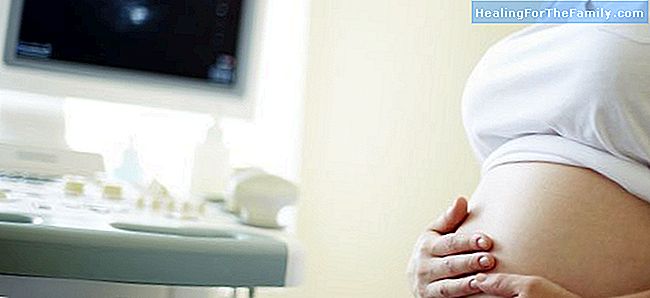What is placental accreta in pregnant women
Placental accreta is an abnormal insertion of the placenta in the wall of the uterus, and the severity will vary depending on whether the placenta penetrates only one layer of the uterus (placenta accreta), in the three layers of the uterus (intimate) or through it (percreta). But, how does this pla
Placental accreta is an abnormal insertion of the placenta in the wall of the uterus, and the severity will vary depending on whether the placenta penetrates only one layer of the uterus (placenta accreta), in the three layers of the uterus (intimate) or through it (percreta).
But, how does this placental problem affect the pregnant woman?
Consequences of placental accretion in the pregnant woman

Maternal and fetal morbidity and mortality can be affected by this type of pathology, which usually appears in the last of the three phases of delivery: delivery, when the mother already has her baby in arms and only the expulsion of the placenta remains.
Normally this occurs within 20 minutes after the birth of the baby, and in most hospitals, to facilitate this event and prevent maternal hemorrhage after delivery is what we call directed delivery. We suspect that there is some degree of accretion when the placenta does not come off in a prudential time or when, after delivery, a cotyledon is missing in the revision of the placenta.
Symptoms and risk factors of placental acrestismo during pregnancy
During pregnancy, placental accreta is usually asymptomatic, it is during delivery that the main complication associated with this phenomenon occurs: maternal hemorrhage.
What are the risk factors ?:
- Placenta seated in a uterine scar, with the previous caesarean section being the main cause. The risk increases with the number of cesareans.
- Placenta previa.
- Previous uterine scar, due to any surgical intervention. Otros - Other factors: age over 35 years, multipiparity, endometrial myomas, tobacco ...
Diagnosis and treatment of placental accreta in pregnant women
The diagnosis prior to delivery will determine a better management of the situation. The preferred method is vaginal ultrasound, by which the gynecologist assesses the normality of the placenta, its insertion ... In those cases in which the ultrasound is inconclusive, an MRI is performed.
What is the prognosis and treatment? If there is a diagnosis is acretism before delivery, it is usually scheduled a cesarean, in order to reduce bleeding. Although the decision must be individualized, taking into account the peculiarities of each woman and her baby.
The definitive treatment for placenta accreta
is hysterectomy after caesarean section , especially in women who do not wish to have more children, or when the bleeding can not be managed with other means: uterine artery embolization, drugs, mechanical procedures (placement of a balloon that compresses the bleeding bed).If after delivery, placental accreta is suspected because there is no delivery, and the woman wishes to have more offspring, maneuvers are performed to preserve the uterus,
such as manual removal of the placenta .In recent years, conservative treatment has been proposed, in such a way that the placenta would be left 'in situ', with the aim of conserving the uterus and neighboring organs, in case of penetration and involvement of other organs. And it is contemplated in those patients who consider keeping their fertility.












